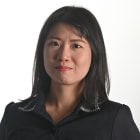AT&S expands in Malaysia as global AI demand accelerates
Since setting up in Malaysia last year, the tech giant has invested more than €1.2 billion (US$1.4 billion) in facilities and operations, and has committed another €500 million for the next phase of expansion.

AT&S opened its first Malaysian plant in 2024 and launched a new RM5 billion (US$1.2 billion) campus at the Kulim Hi-Tech Park in May this year.

This audio is generated by an AI tool.
KUALA LUMPUR: Austria-based printed circuit board and substrate maker AT&S is expanding its footprint in Malaysia as global demand surges for advanced components powering supercomputers and artificial intelligence systems.
Speaking to CNA in Kuala Lumpur, AT&S Chief Executive Officer Michael Mertin said the company’s Malaysian operations have already reached full capacity – prompting fresh plans for expansion.
“This market is growing extremely fast now … this is a challenge for our supply chain. The first building we already equipped 100 per cent, and we are thinking about starting in the second stage of our investment,” he said.
The chipmaker opened its first Malaysian plant in Kulim in the northwestern Kedah state in January 2024.
In May this year, it launched a new RM5 billion (US$1.2 billion) campus at the Kulim Hi-Tech Park.
AT&S’ Malaysian operations produce high-end integrated circuit substrates for next-generation microchips used in high-performance computing, data centres, and AI applications. A substrate is the non-conductive base layer of a circuit board.
Since setting up in Malaysia, the company has invested more than €1.2 billion in its facilities and operations.
Mertin said that an additional €500 million has already been committed for the next phase of expansion.
“We are profitable now … so we have a lot of cash flow positively to further invest into Kulim and other high-end sites. Kulim definitely is a centre for upcoming investments,” he said.
MORE SKILLED WORKERS NEEDED
AT&S currently employs about 2,100 workers in Malaysia.
Mertin noted that while the tech giant is eager to expand locally, the shortage of skilled talent remains a key challenge for Malaysia’s fast-growing semiconductor sector.
He urged the country to strengthen its education and talent pipeline to support growth in advanced industries.
“For Malaysia ... to formally grow in high-tech areas ... take care of higher education,” he said.
“It starts very early in school, so that kids are interested in technology, mathematics, engineering. And of course, (there’s) a need for high-class universities as well, (placed) relatively close to investment hotspots.”
GROWTH MOMENTUM
Earlier this month, the tech manufacturer reported a better-than-expected first-half revenue of €846 million, up 6 per cent year-on-year.
It forecasts annual revenue of about €1.7 billion this financial year and expects a sharp increase of over 23 per cent in the next fiscal year, reaching between €2.1 billion and €2.4 billion.
“With the substrates for the supercomputers, this growth is beyond 20 per cent year over year. We expect this kind of growth to be continued,” said Dr Mertin.
Despite robust growth, the CEO acknowledged that geopolitical tensions, particularly those involving the United States, pose ongoing risks.
AT&S said the impact of tariffs on the market has so far been limited, although uncertainty in global trade policies has prompted some companies to adjust their inventories and place early orders.
“It's not that much the tariffs, because we are not delivering directly to the US. Our customers mostly further integrate their products somewhere in Asia,” Mertin explained.
“So, this tariff war is something that is not really affecting us. But the uncertainty is where products should be produced and where to further invest.
To mitigate such risks, AT&S has pursued a “China for China” strategy, with its plants in Shanghai and Chongqing collaborating with local partners.
It has also established dedicated sales and technology teams to serve local customers and ensure business continuity amid shifting global conditions.
Aside from Malaysia and China, the company has production sites in Austria and India China.
“We are in a pretty good situation that we can react quite quickly, if necessary, for further demand,” Mertin said.


















